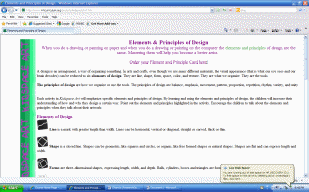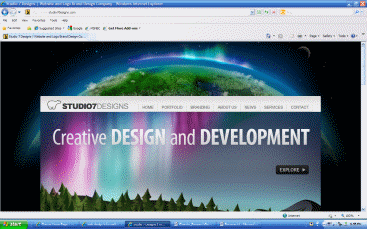History of the Internet Including Major Milestones
The origin of the internet can be traced back to 1969 in Los Angeles, California. During this time, two computers at the University of California were used to exchange information. The project was funded by the United States government to establish a robust interlink of computers for military purposes. In 1972, Ray Tomlison invented the use of e-mail as an internet application to ease the transfer of information. Vint Cerf and Bob Kahn later developed TCP which was a communication technique that allowed multiple computer networks to work in synchrony.
In 1983, the use of names for domain systems was introduced. Five years later, the internet was plagued by worms which deterred the development and use of the internet altogether. However, in 1989, Quantum computer services, AOL, introduced an American online service which was to be later used by Macintosh and Apple II computers. Tim Berners Lee later took the internet to a whole new level by developing the World Wide Web (WWW) but at the same time, creating controls for computers at CERN. Marc Anderson and his colleagues at the University of Illinois later created the first web browser (mosaic) in 1993. Anderson and his team then formed a company that took the internet to a commercial level. This initiative saw the birth of Netscape which later attracted the interest of Microsoft Company. Today, the internet has been widely used for commercial purposes because it has come of age as a force to reckon with in the 21st century (Tyson, 2010).
Impact on Society
The internet has practically changed the social, political, and economic aspects of the world today. Socially, the internet has created new ways through which people can interact and associate. Today, the internet has seen the interlinking of people across the world through social networking sites such as Facebook, Twitter and Myspace. The corporate front has also been redefined through advertising, franchising, and distribution of company products online. The way politics is carried out has also tremendously changed because of the internet. Political parties have been able to solicit funds online and avail information to the general public through government websites and the like (Maki, 2010).
Various Applications of the Internet
oday the use of e-mail as a common internet application is widely used to transfer information and files across the globe. Movies can be created to convey various points, for example, through adverts or sharing of information on sites such as youtube.com where videos can be freely shared. Online chat has also changed the way people interact over the internet through spontaneous messaging which could be accompanied by face-to-face interaction. Weather forecasts through the internet can also avail information regarding weather forecasts on a global scale. With these applications, the world has been transformed into a global village (Maki, 2010).
Web Design Best Practices
The design and layout of many website applications can be enhanced through the incorporation of the best web layout practices which include color, style and font choices. Different web designs should use these tools in correct applicability to fulfill the intended purpose. Usability will however depend on proper testing to ensure the web design is effective enough. Further testing should also be undertaken periodically to ensure the design stays true to its purpose. When this is done, site applicability will depend on the ability of users to understand the contents of the web through the use of adaptive technologies. Factors such as accessibility to e-mail should be considered because, in some societies, access to information through email is considered a luxury. Accessibility will also have to be done with consideration to any form of disability by the users. For example, audio information should be availed to users who are blind (Maki, 2010).
Online Communications
The most common ways of interacting online are usually between people and people, companies/organizations, and customers and organizations to another. Organizations usually interact with their clients or customers through blogs, forms on websites, and feedbacks, while people and companies might exchange information through e-mails and instant messaging. Social networking sites are also common for social interactions while chat rooms can be used for both corporate and social forums (Maki, 2010).
Several Ethical Considerations and Personal Opinions
The biggest concern to internet use has been privacy issues because most online applications can be doctored to access personal or corporate information. Individuals and organizations should however incorporate the use of tamper-proof soft wares that minimize privacy violations. Unregulated internet access to children also exposes the young generation to inappropriate materials. Parents should therefore restrict access to internet websites through the use of internet tools. The exploitation of the internet as an open, diverse, interactive, and unregulated medium of communication has seen much inappropriate content being exchanged, including hate messages which have detrimental effects on recipients. Not much can be done to regulate this but website developers should be able to monitor content at all times to avoid such occurrences (Living Internet, 2010).
Conclusion
The internet has brought many opportunities in all aspects of life including social, political, and economic fronts. People and organizations should therefore take advantage of this fact to improve personal and institutional strategies. Since most of the operations in the world today are aligned to the use of the internet, everyone should be ready to take the challenge because it is a force to reckon with in the 21st century (Living Internet, 2010).
References
- Living Internet. (2010). The Future of the Internet. Web.
- Maki, A. (2010). Everyone Uses the Internet for a Reason.
- Tyson, J. (2010). How Internet Infrastructure Works. Web.
Appendix
Visual Examples


